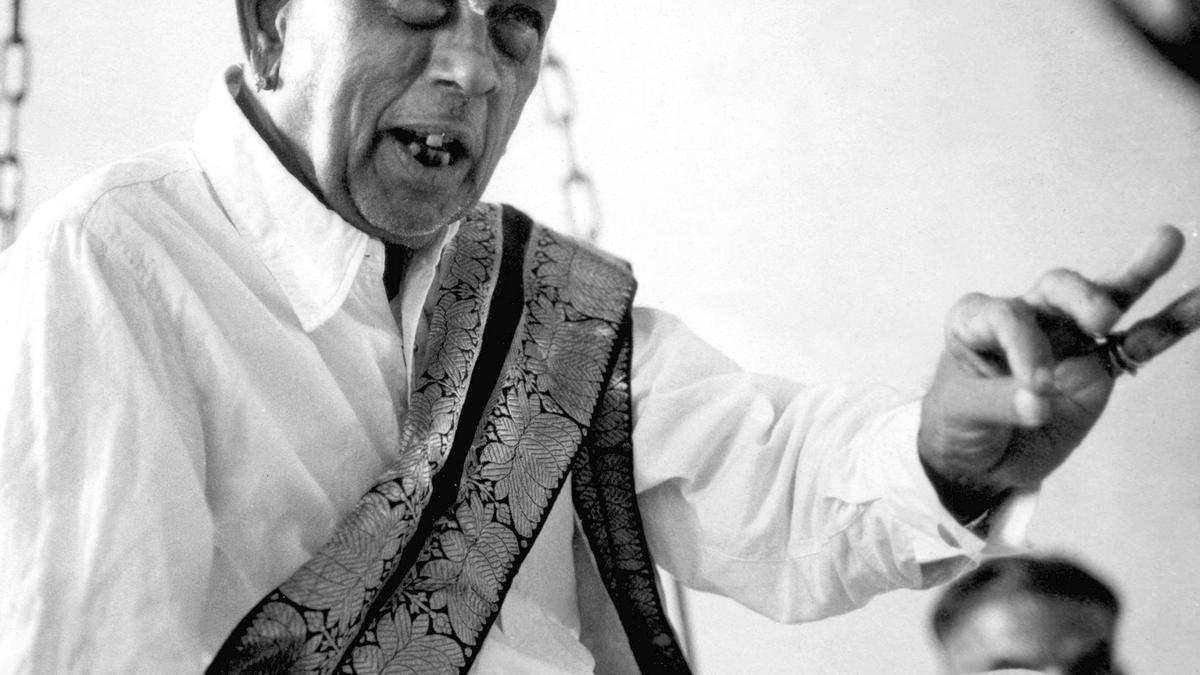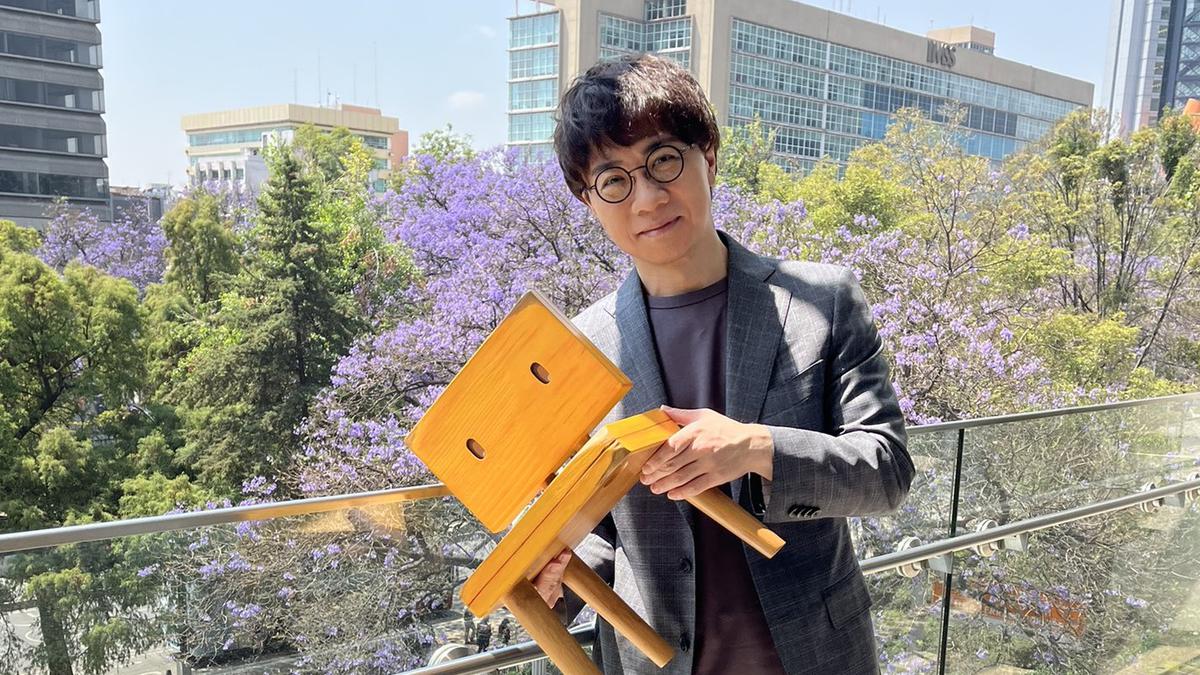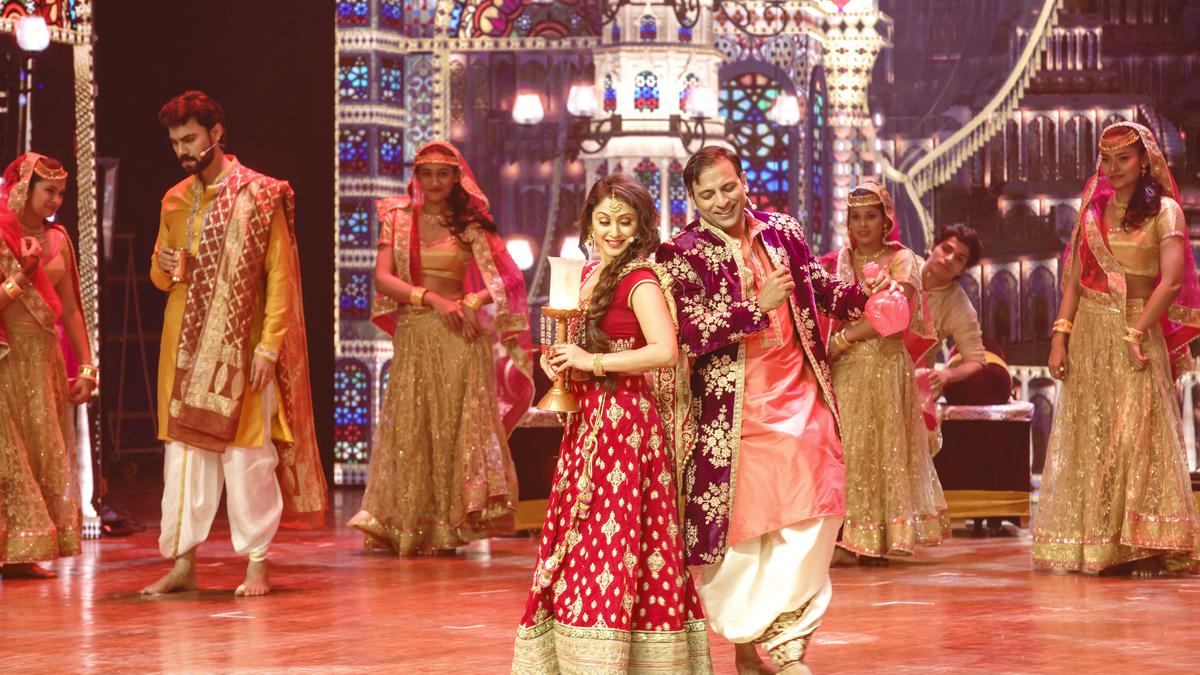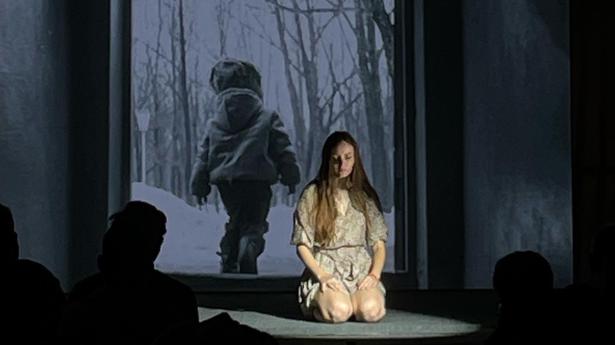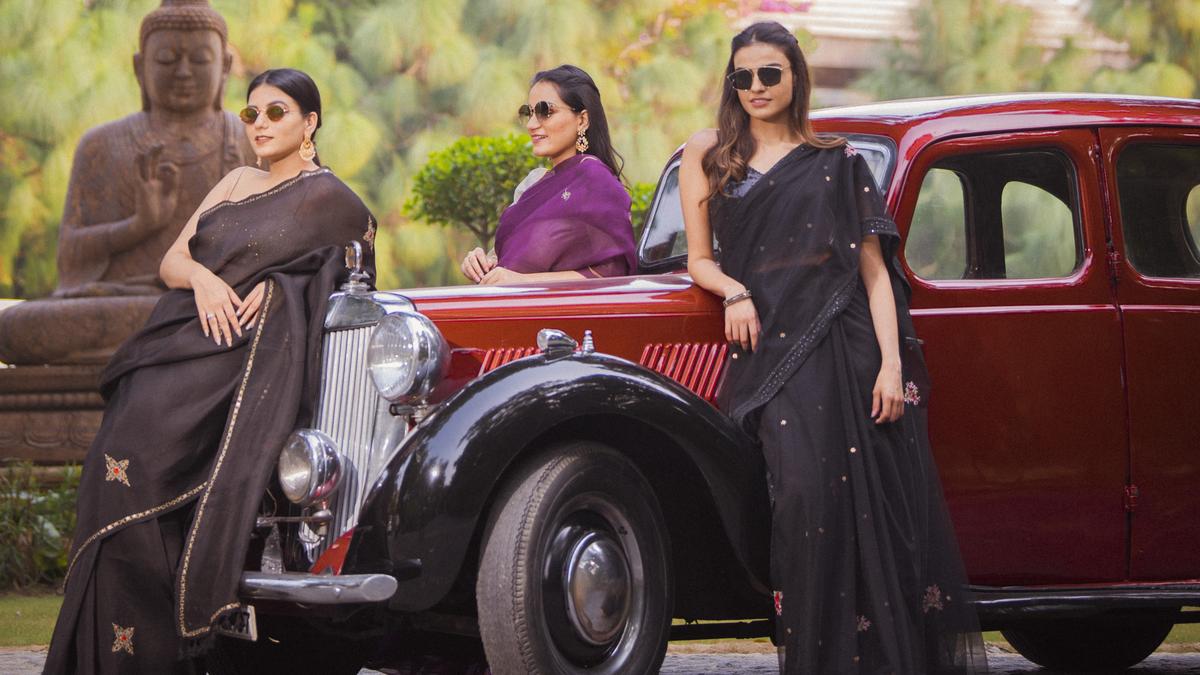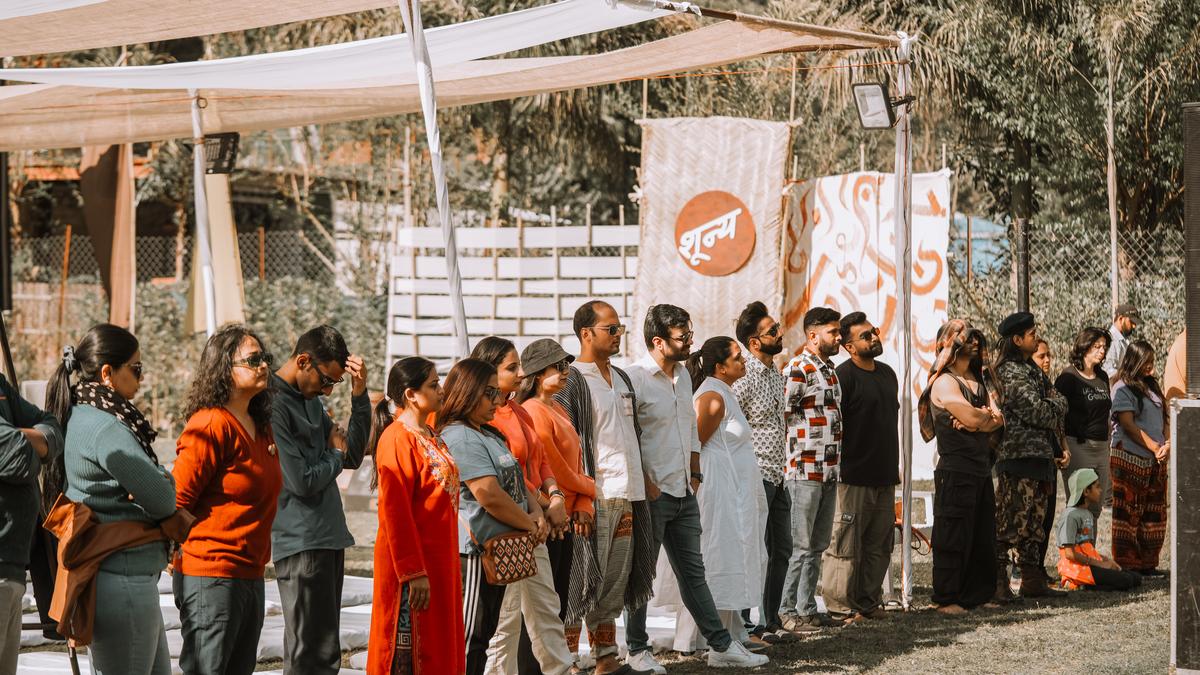If it is December, it is time to celebrate the city’s rich musical tradition, which has brought it international recognition. In 2017, Chennai became part of UNESCO’s ‘Creative Cities Network’. We need to be thankful to the many past masters, who took Carnatic music to great heights through their intelligence and imagination. Here, presenting 10 Carnatic stalwarts of the 20th century.
Ariyakudi Ramanuja Iyengar: 1890-1967
He is described as the maestro who made the audience sit up with his singing, and the one who gave shape to the modern Carnatic concert pattern. Before his arrival, musicians rendered only one or two kritis with elaborate alapanas, and the concerts went on until the wee hours of the night. In December 1927, at the music conference held along with the All India Congress Session, Ariyakudi proposed radical changes in the concert presentation, which were accepted. He blended the styles of various musicians and devised the kutcheri paddhati, in order to raise audience interest and curiosity.
The concert format: A brisk varnam followed by an invocation to Ganesha and then songs by various composers in varied languages were sung with or without kalpanaswaras. The main piece had an elaborate alapana followed by the violinist’s impression of the same, improvisatory techniques such as the niraval and kalpanaswaras, and tani avartanam. This was then followed by tukkadas that included bhajans, familiar songs, and finally ended with a brisk thillana.
Ariyakudi illustrated this new pattern with his rendering of Tyagraja’s Kamboji kriti, ‘Evari mata’. Palghat Mani Iyer became his admirer and accompanied him at his concerts. Ariyakudi learnt from Poochi Srinivasa Iyengar, who belonged to the sishya parampara of Tyagaraja, and Patnam Subramania Iyer. Ariyakudi was the first musician to set the Thiruppavai to music. His devotion to Tyagaraja is proved by the fact that the first five pasurams of Thiruppavai are in the ragas of Pancharatna kritis.
G N Balasubramaniam
| Photo Credit:
The Hindu Archives
G.N. Balasubramaniam: 1910-1965
GNB was a star singer. His innovative art emphasised laya control and reduced the gamakas. He considered Ariyakudi as his manaseeka guru and was guided by T.S. Sabesa Iyer. Known for his briga-laden brisk music, he invented new ragas and was a composer in his own right – ‘Sudha madhurya bhashini’ in Vandana Dharini and ‘Srichakra raja nilayae’ in Sivasakthi. Think of him when you listen to ‘Ranjani Niranjani’ in Ranjani or ‘Vasudevayani’ in Kalyani. The elaborate Soundarya Lahiri invocation piece, ‘Vande mataram ambikam bhagavatheem’, that he rendered towards the end of his concerts had a lingering effect. A popular guru, his disciples included the likes of MLV, Radha-Jayalakshmi, Trichur Ramachandran, and Thanjavur Kalyanaraman. Talking on radio once, justice T. L. Venkatrama Iyer mentioned how his father wanted him to be a musician while GNB’s father wanted his son to be a lawyer. But destiny desired otherwise. Surprisingly, both got Sangita Kalanidhi, TLV as a musicologist.
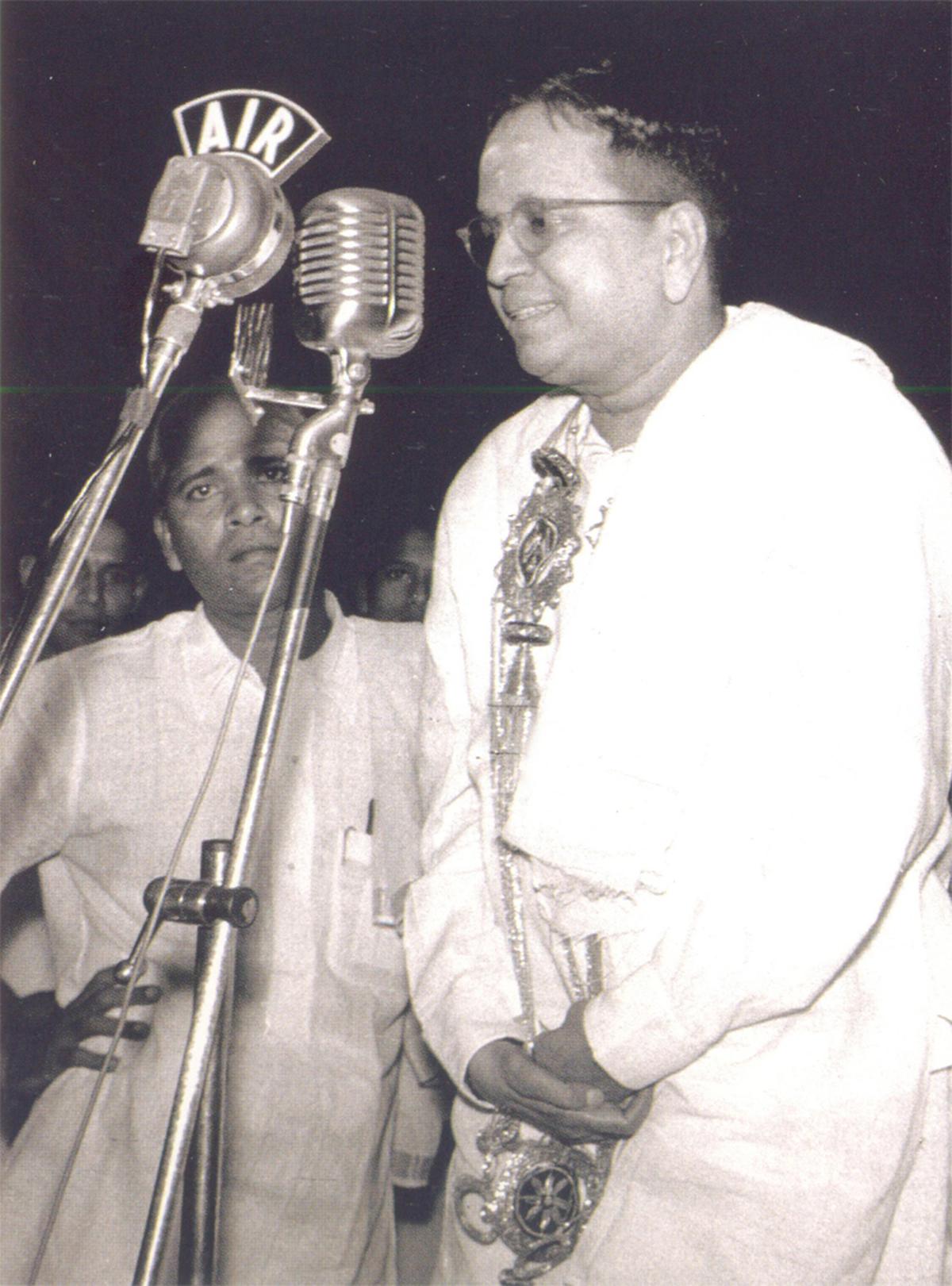
Madurai Mani Iyer
| Photo Credit:
The Hindu Archives
Madurai Mani Iyer: 1912-1968
A highly celebrated vocalist, Madurai Mani Iyer was known for his unique style and skill in singing kalpanaswaras, alapana and niraval. A student of Harikesanallur Muthiah Bhagavatar, his renderings still leave listeners spellbound. Mani Iyer went on to popularise the ‘English notes’, which nobody can replicate even today. His ragam, tanam, pallavi and swaraprastaras had an emotive appeal. When he sang the Kanada piece, ‘Nithyamaina suswara ganamutho’, one felt as if Tyagaraja had blessed him. It is said that once Mahaperiyava was on a yatra with his followers when he heard Mani singing. Periyava went in, sat on the pyol of the house and listened to his singing of ‘Kapali’ in Mohanam. He was moved to tears. Even today, Mylaporeans hold monthly festivals featuring listening sessions of Madurai Mani’s concerts. You will invariably leave feeling ‘Eppo varuvaaro’.
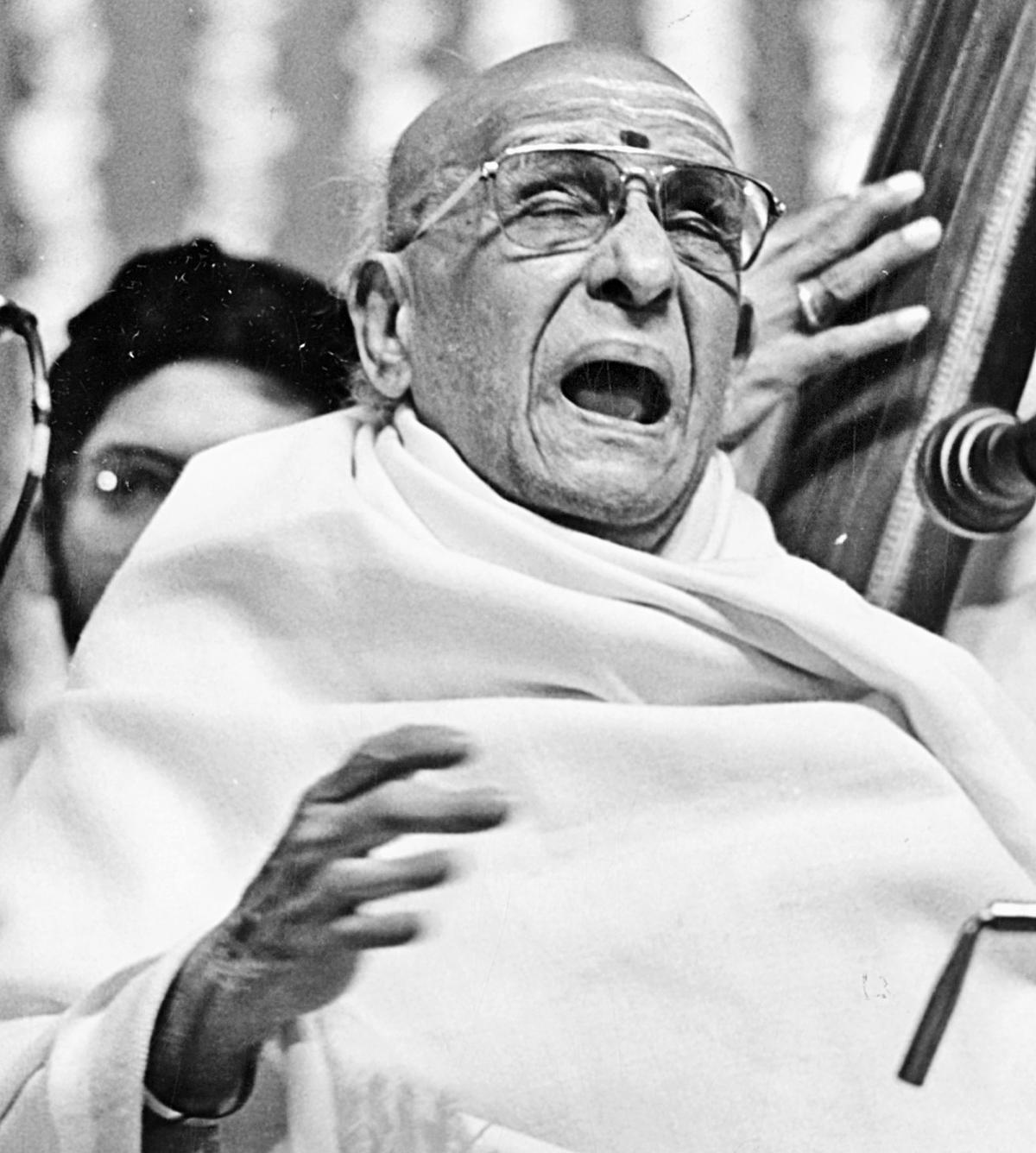
Semmangudi Srinivasa Iyer
| Photo Credit:
The Hindu Archives
Semmangudi Srinivasa Iyer: 1908-2003
The youngest recipient of the Sangita Kalanidhi award traces his lineage to violin maestro Tirukkodikaval Krishna Iyer, gottuvadhyam exponent Tiruvidaimaruthur Sakharama Rao, and vocalist Umayalpuram Swaminatha Iyer.
Semmangudi was a master of improvisation in niravals. He was known for his selection of songs, speedy rendering of swaras and his nasal voice. His singing style was widely followed, so much that he trained a large number of disciples. He was instrumental in developing the Swati Tirunal School of Music in Trivandrum. Listen to his elaboration of Tyagaraja’s Mukhari piece ‘Ksheenamai’ and ‘Sapasya Kausalya’ in Jaunpuri, and you will be moved beyond words. He was the dhathu kartha of the famous Swati Tirunal composition ‘Bhavayami Raghuramam’. Each of the seven charanams reflects the mood of the Ramayana in Ragamalika.
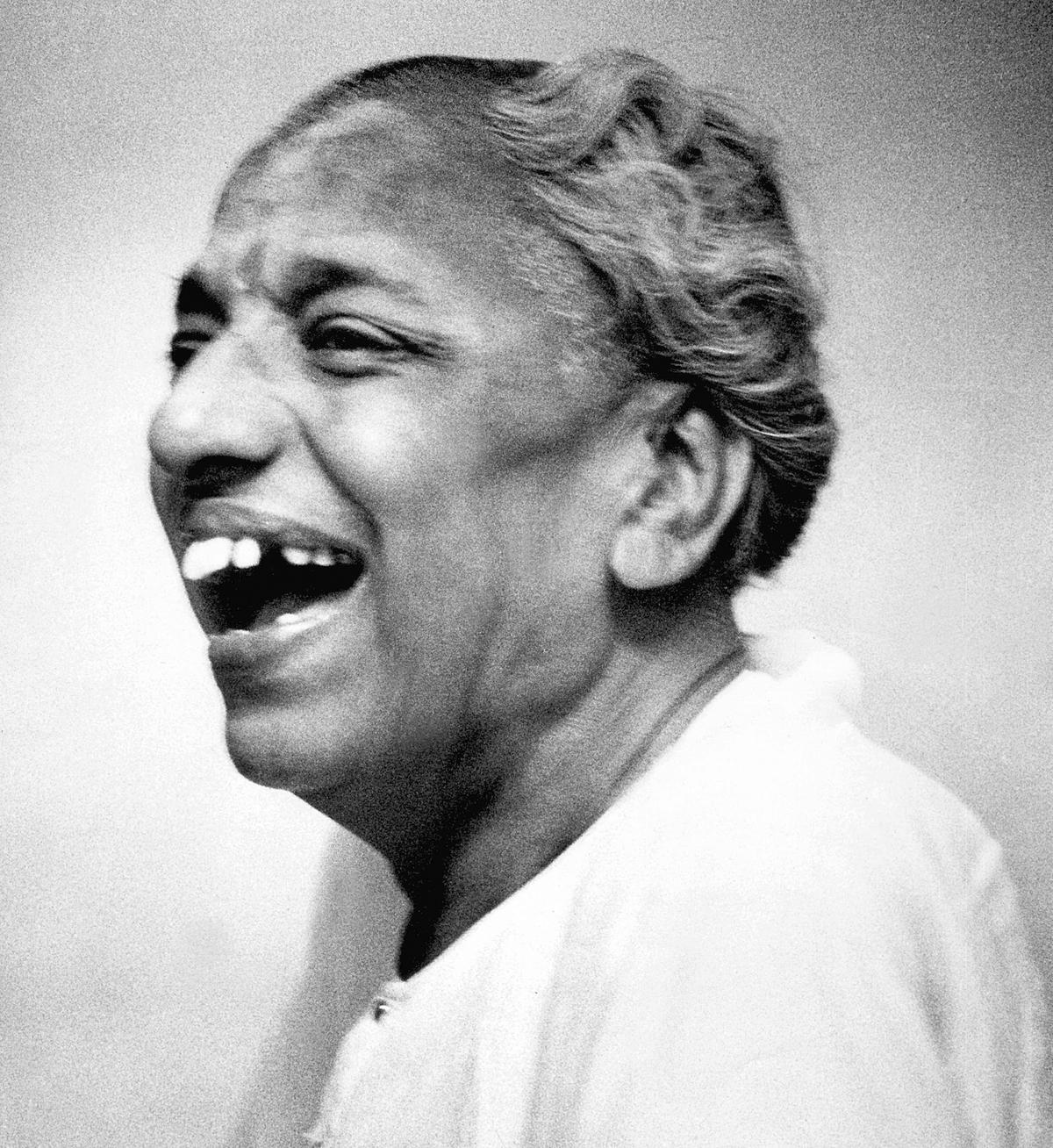
M.D. Ramanathan
| Photo Credit:
The Hindu Archives
M.D. Ramanathan – 1923-1984
A common criticism about Carnatic musicians is that unlike their Hindustani counterparts, they lack voice culture — akaara pramaanam. MDR proved it wrong with a distinct style rich in bhava and laya. The favourite student of Tiger Varadachari, MDR had a booming voice and sang at vilambit kaal. Often times, he would start off with the anu pallavi and then come to the pallavi. Also a composer, his mudhra was ‘Varada Dasa’ in remembrance of his guru. The Bagesri piece, ‘Sagara shayana vibho’ continues to ring in your ears long after you have heard the song. Why was he not awarded the Sangita Kalanidhi? We might as well ask why Mahatma Gandhi was not given the Nobel Peace Prize.
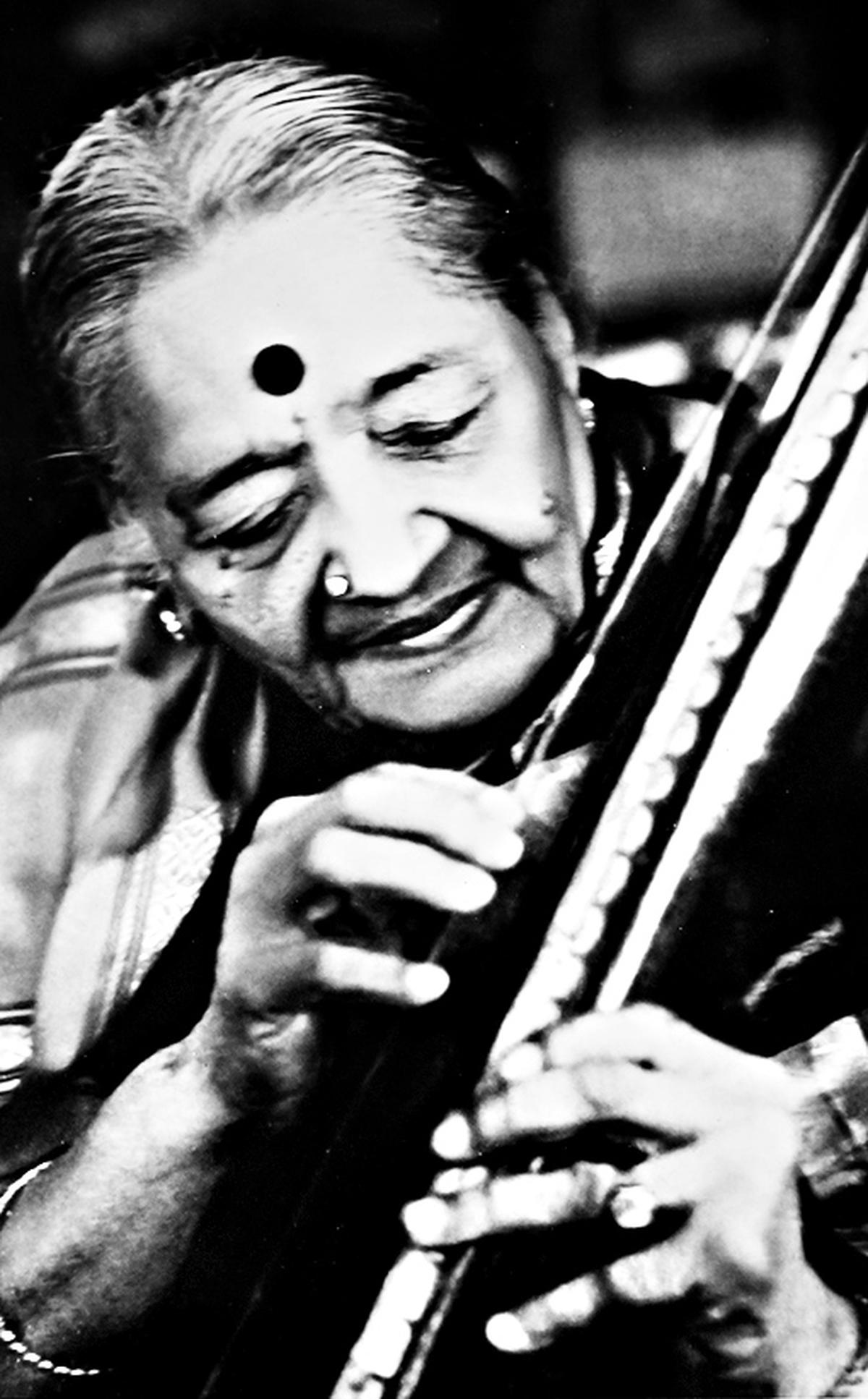
D.K. Pattammal
| Photo Credit:
JOTHI RAMALINGAM B
D.K. Pattammal: 1919-2009
It was the midnight of August 15, 1947. Jawaharlal Nehru delivered his immortal speech. AIR Madras broadcast ‘Aaduvomae pallu paaduvome’, the freedom song by Mahakavi Bharati. It was D.K. Pattammal who sang it.
A specialist in Dikshitar kritis, she learnt from stalwarts such as Naina Pillai, T.L. Venkatrama Iyer and Papanasam Sivan. She started revolutionary trends in Carnatic music. Pattammal was the first woman artiste to perform ragam, tanam, pallavi. She handled the rhythmic complexities of intricate talas, earning the respect and admiration of fellow musicians. She was referred to as ‘Pallavi Pattammal’ or ‘Padanthara Pattammal’. UNESCO has preserved her rendering of Dikshitar’s ‘Mamava meenakshi’ in Varali as a ‘heritage kriti’. Both DKP and her brother D.K. Jayaraman were awarded the Sangita Kalanidhi, a unique distinction for the family.
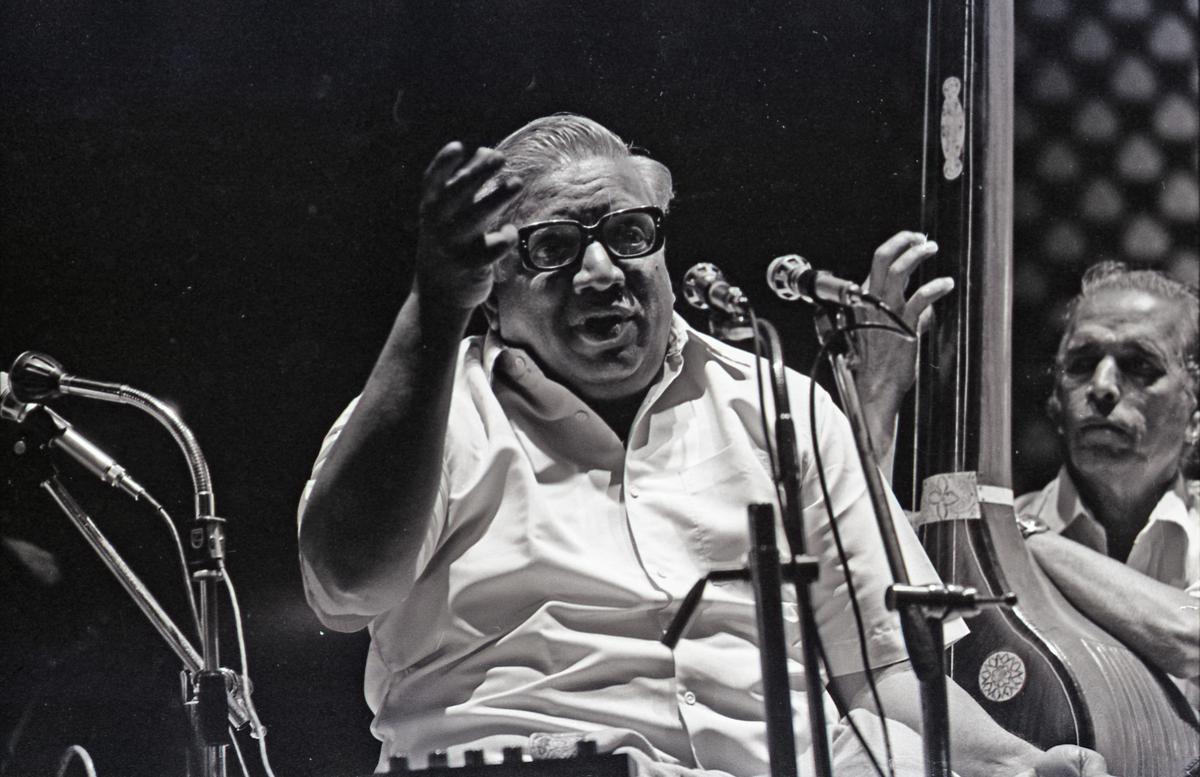
Maharajapuram Santhanam
| Photo Credit:
The Hindu Archives
Maharajapuram Santhanam: 1928-1992
One of the most popular vidwans of the century, Maharajapuram Santhanam’s father Viswanatha Iyer was an equally outstanding vidwan — arare case of both father and son getting honoured with the Sangita Kalanidhi. Mohana raga was Santhanam’s pithrarjitham. His mastery over the swaras enabled him to sing the alapana, tanam, pallavi and swaraprasthara in an elaborate style. ‘Bho shambo’ in Revathi, ‘Sri chakra raja’ in Ragamalika, and ‘Ksheerabdhi kannike’, another Ragamalika masterpiece, were among his well-known compositions. Once at a concert in Siri Fort, Delhi, which lasted several hours, the audience wanted him to continue while he had a flight to catch. He sang ‘Vilayada ithu nerama’ in Shanmukhapriya in response. On yet another occasion, when he elaborated Darbar with a tinge of Nayaki, someone questioned this mix of ragas. He replied, “What is Darbar without Nayaki?”
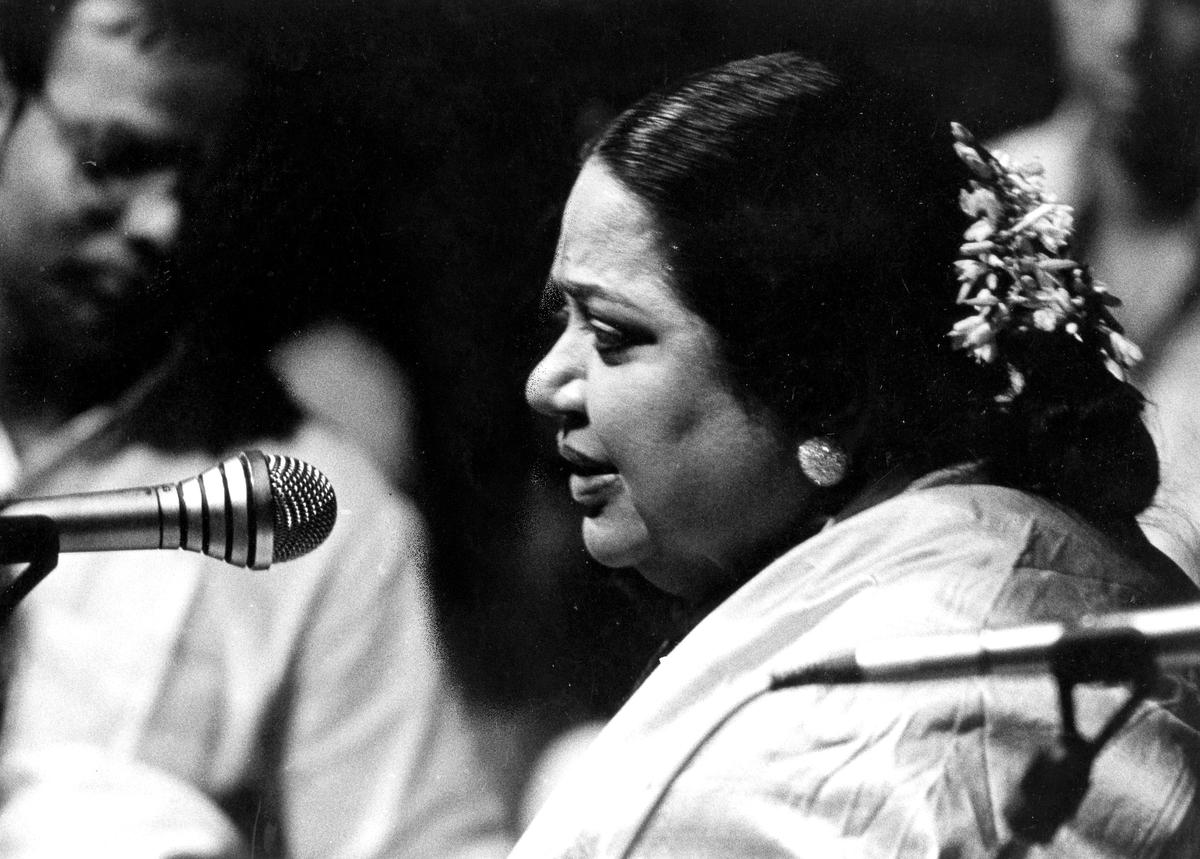
M.L.Vasanthakumari
| Photo Credit:
D. KRISHNAN
M.L. Vasanthakumari: 1928-1990
A prime disciple of GNB, Vasanthakumari popularised unfamiliar ragas, Purandaradasa kritis, and intelligently structured ragam, tanam, pallavi. Her racy style that sparkled with brigas and never-heard-before nuances, revealed a new range of colours on a musician’s palette. The innovations and technical virtuosity she inherited inspired her disciples (her sishya parampara is legendary). She adopted GNB’s style of a quick impressionistic sketch of the raga, covering the two octaves at the start, but settled down to a reposeful elaboration, unfolding it gradually with her virtuosity in the form of briga cascades. She could render difficult ragas with her alapana and kalpanaswaras. MLV could gracefully shift from the melodic world of one raga in one pitch to another raga in another pitch in a lightning manner. Listen to her Chaturdasa Ragamalika piece by Dikshitar, ‘Sri viswanatham bhajeham’, and you will feel elevated.
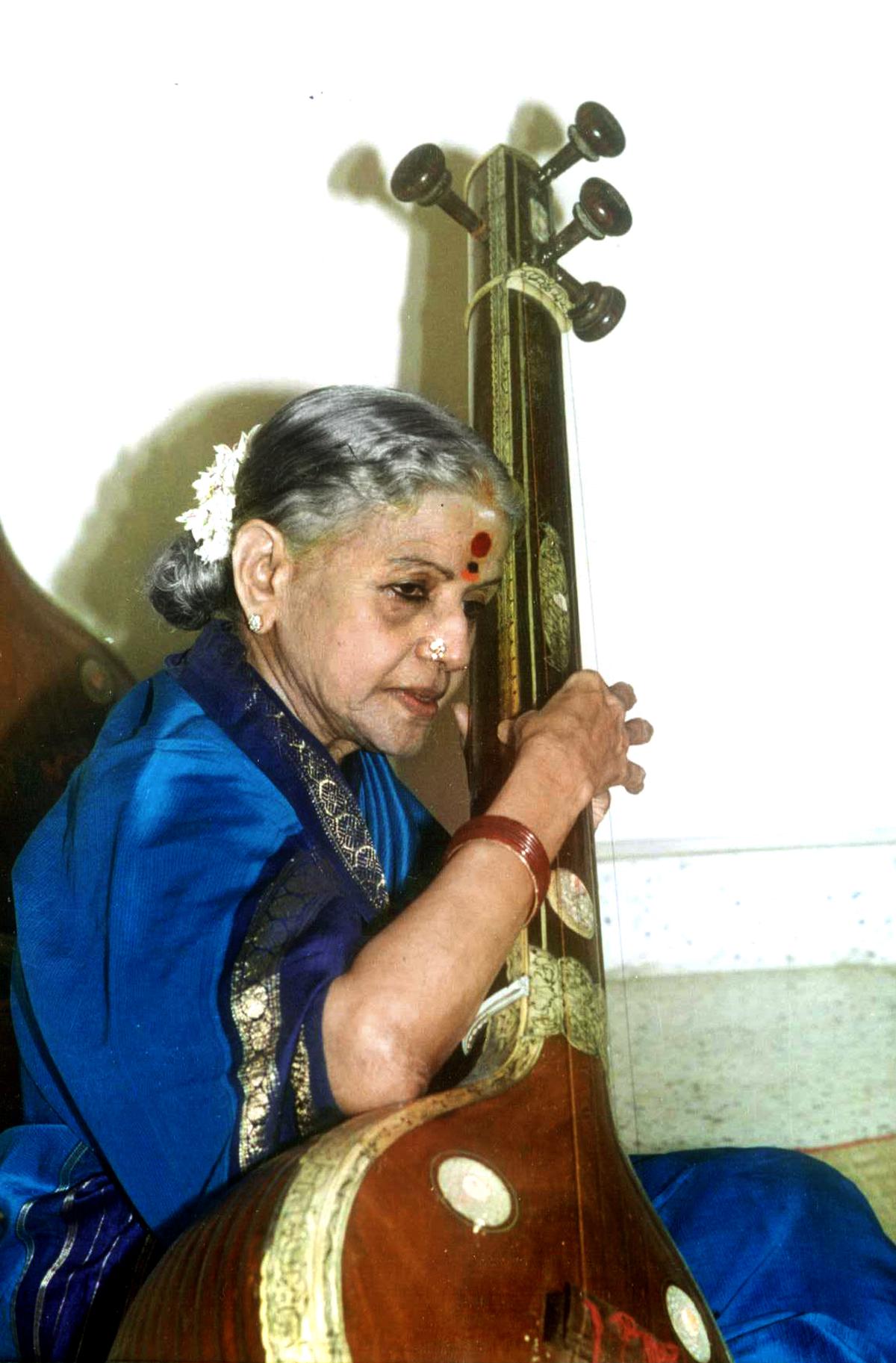
M.S. Subbulakshmi
| Photo Credit:
HINDU PHOTO ARCHIVES
M.S. Subbulakshmi: 1916-2004
“What am I, a mere Prime Minister before a queen, a queen of music,” said Jawaharlal Nehru on M.S. Her ‘Sarojadala netri’ in Sankarabharanam took us into the sanctum sanctorum of Madurai Meenakshi temple. Whether it was Thodi or Kalyani, the elaborate alapana and swaraprastaras proved that she was an artiste par excellence. ‘Maitreem bhajatha’ that she sang at the end of her historic 1966 U.N. concert brought her international recognition. She revived Mahavaidyanatha Sivan’s composition featuring 72 melakartha ragas, nearly a century later.
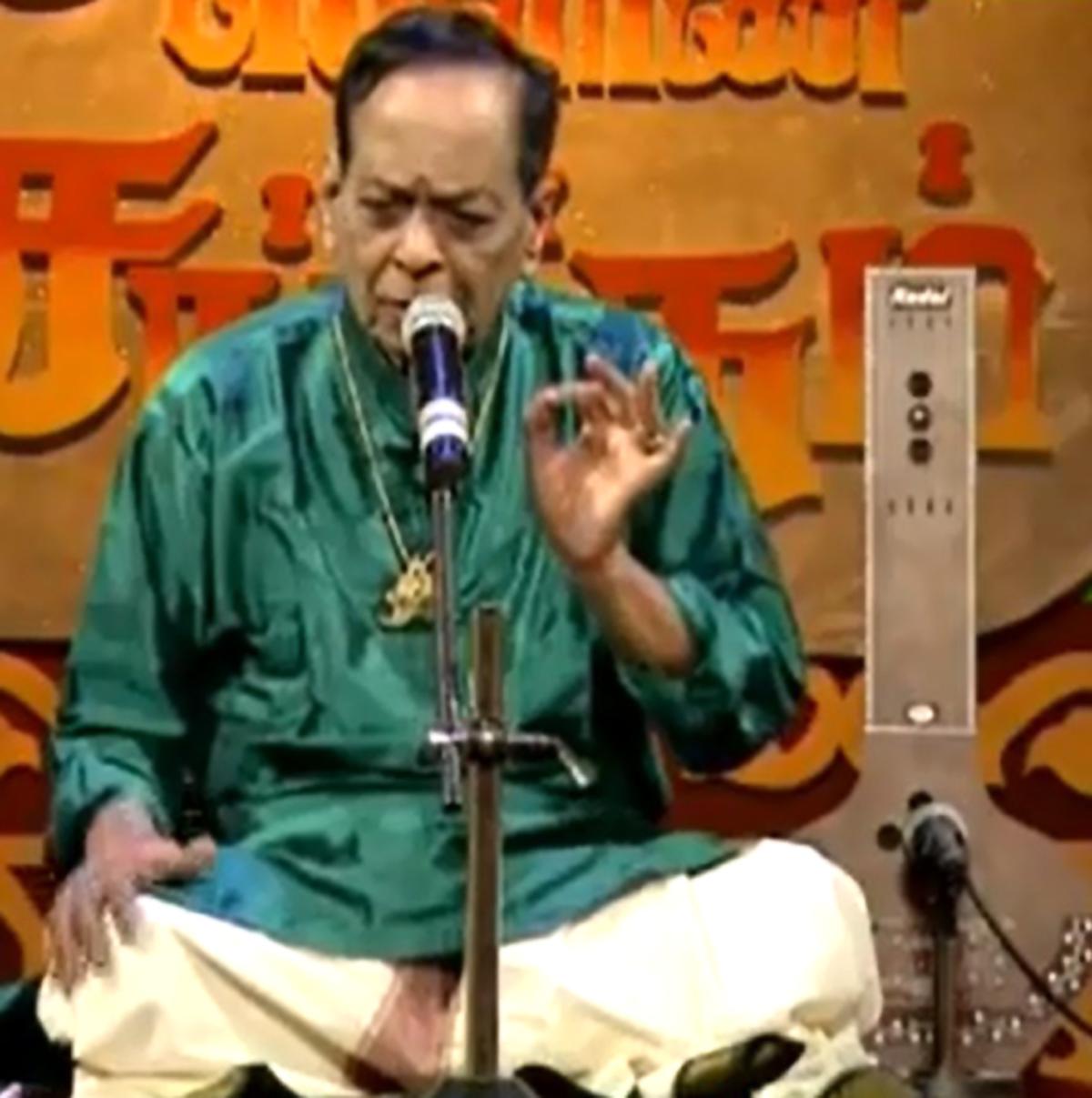
Balamuralikrishna
| Photo Credit:
Special Arrangement
Mangalampalli Balamuralikrishna: 1930-2016
Balamuralikrishna made a sensational arrival on the Carnatic music stage at the age of eight. He claimed himself to be a swayambu though he was a student of Parupalli Ramakrishnaiah Pantulu, a direct descendant of Tyagaraja. A musical genius, Balamurali composed 400 kritis and sang in all the 72 melakarta ragas. Several eyebrows were raised when he created new ragas such as Mahathi, Lavangi, Ganapathi, Sumukhan, and Siddhi, and some of them had only three or four notes instead of the mandatory five or seven. The Hindu described his concerts as “style-defining tradition”. Not many are aware that he had composed music for Tagore’s Gitanjali and rendered it in Bengali. He also invented a new tala system. Orthodoxy frowned at this daredevilry. He represented continuity with change. Listen to his Abheri kriti ‘Nagumomu’ and Tyagaraja’s Utsava Sampradya kritis. His lilting voice soothes the mind and soul.


